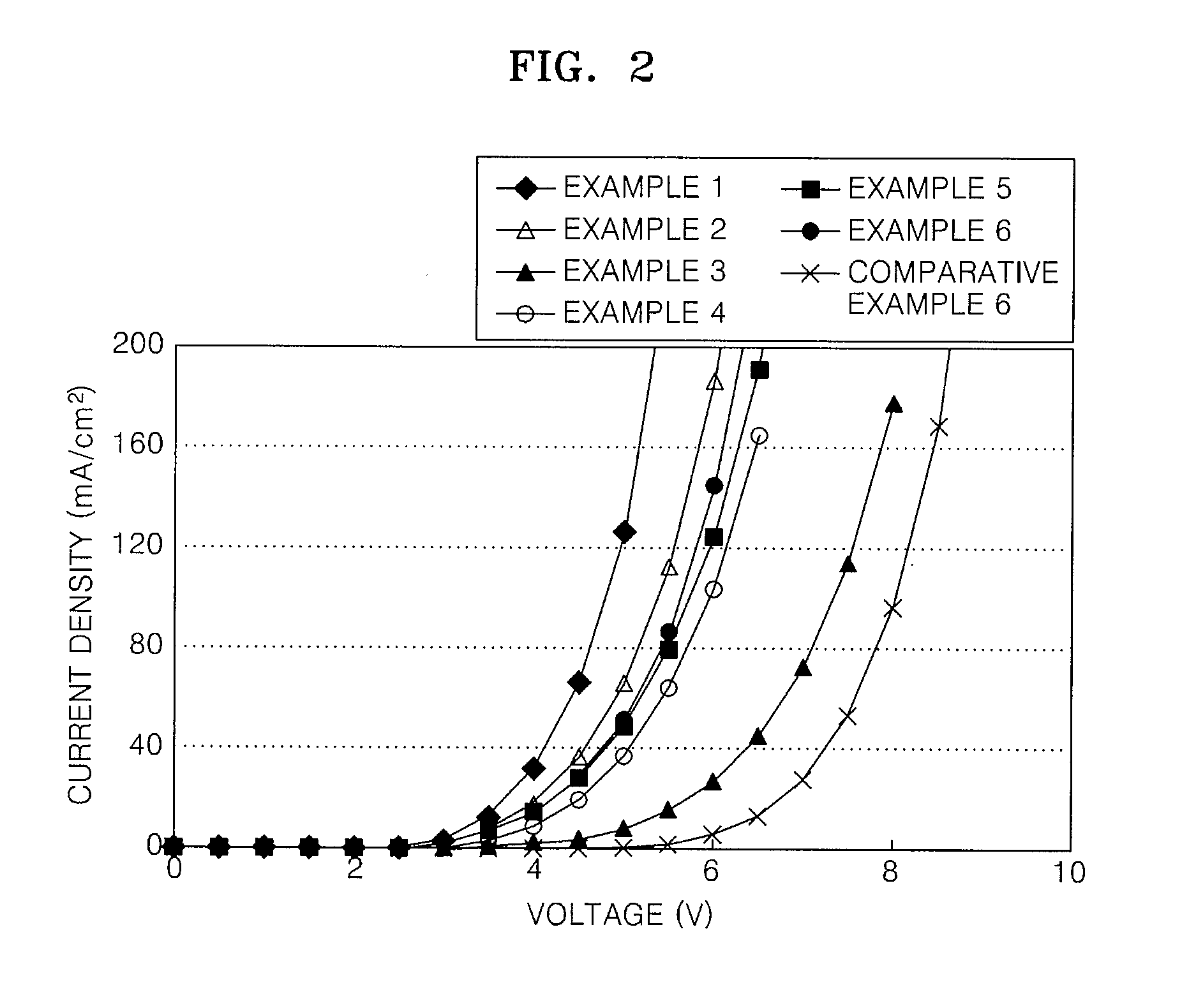Imidazopyridine-based compound and organic light emitting diode including organic layer comprising the imidazopyridine-based compound
- Summary
- Abstract
- Description
- Claims
- Application Information
AI Technical Summary
Benefits of technology
Problems solved by technology
Method used
Image
Examples
synthesis example 1
Synthesis of Compound 1
[0067]Compound 1 was synthesized through Reaction Scheme 1 below:
Synthesis of Intermediate 1a
[0068]10 g of copper bromide (44 mmol) and 8 g of 2-aminoanthraquinone (35.8 mmol) were added to 250 ml of bromic acid, and the mixture was heated at 65° C. After gas generation was terminated, the mixture was cooled to room temperature. Then, the mixture was added to 1,000 ml of 20% aqueous hydrochloric acid, and was extracted with dichloromethane. Moisture remaining in an organic layer was removed with anhydrous MgSO4, and the resulting product was dried under pressure. The resulting product was purified by column chromatography (dichloromethane:normal hexane=4:1) to obtain 7.7 g of Intermediate 1a (yield 75%).
Synthesis of Intermediate 1b
[0069]10 g of Intermediate 1a (34.8 mmol) was added to 100 ml of THF dried under nitrogen atmosphere, and the temperature of the mixture was decreased to −78° C. 0.5 M of 2-naphthylmagnesiumbromide (10 mmol) was slowly added to the m...
synthesis example 2
Synthesis of Compound 4
[0074]Compound 4 was synthesized through Reaction Scheme 2 below:
Synthesis of Intermediate 4d
[0075]5 g of imidazopyridine compound 1d (refer to Synthesis Example 1) (18.3 mmol) and 4.12 g of N-iodosuccinic acid (NIS) (18.3 mmol) were dissolved in acetonitrile as a solvent. The mixture was stirred at room temperature for one hour, and then 100 ml of chloroform was added thereto. The mixture was washed with 10% of an aqueous sodium hydroxide solution, and then washed with an aqueous saturated sodium thiosulfate solution and water and dried with anhydrous magnesium sulfate. Then, the resulting product was filtered and the solvent was removed. The obtained solid was washed with methanol and filtered to obtain 5.8 g of an iodo compound (yield 79%).
[0076]The obtained iodo compound and 1.76 g of phenylboronic acid (14.5 mmol) were added to a mixed solvent of 10 g of an aqueous potassium carbonate solution and THF. 335 mg of Pd(PPh3)4 was added to the mixture while th...
synthesis example 3
Synthesis of Compound 7
[0078]Compound 7 was synthesized through Reaction Scheme 3 below:
[0079]Compound 7 was prepared in the same manner as in Synthesis Example 1, except that Intermediate 7d was used instead of Intermediate 1d. Intermediate 7d was obtained using 1-aminoisoquinoline instead of 2-aminopyridine. 10 g of Intermediate 1c (21.08 mmol) and 6.19 g of Intermediate 7d (19.16 mmol) were subjected to a Suzuki reaction, yielding 9.03 g of Compound 7 in the form of a pale yellow powder (yield 70%) (1H NMR (400 MHz, CDCl3) 8.69 (1H), 8.12 (2H), 8.07-8.02 (5H), 7.99-7.95 (4H), 7.89-7.84 (2H), 7.79-7.75 (3H), 7.71-7.65 (4H), 7.64-7.54 (8H), 7.33 (2H), 7.02 (1H)).
PUM
 Login to View More
Login to View More Abstract
Description
Claims
Application Information
 Login to View More
Login to View More - R&D
- Intellectual Property
- Life Sciences
- Materials
- Tech Scout
- Unparalleled Data Quality
- Higher Quality Content
- 60% Fewer Hallucinations
Browse by: Latest US Patents, China's latest patents, Technical Efficacy Thesaurus, Application Domain, Technology Topic, Popular Technical Reports.
© 2025 PatSnap. All rights reserved.Legal|Privacy policy|Modern Slavery Act Transparency Statement|Sitemap|About US| Contact US: help@patsnap.com



